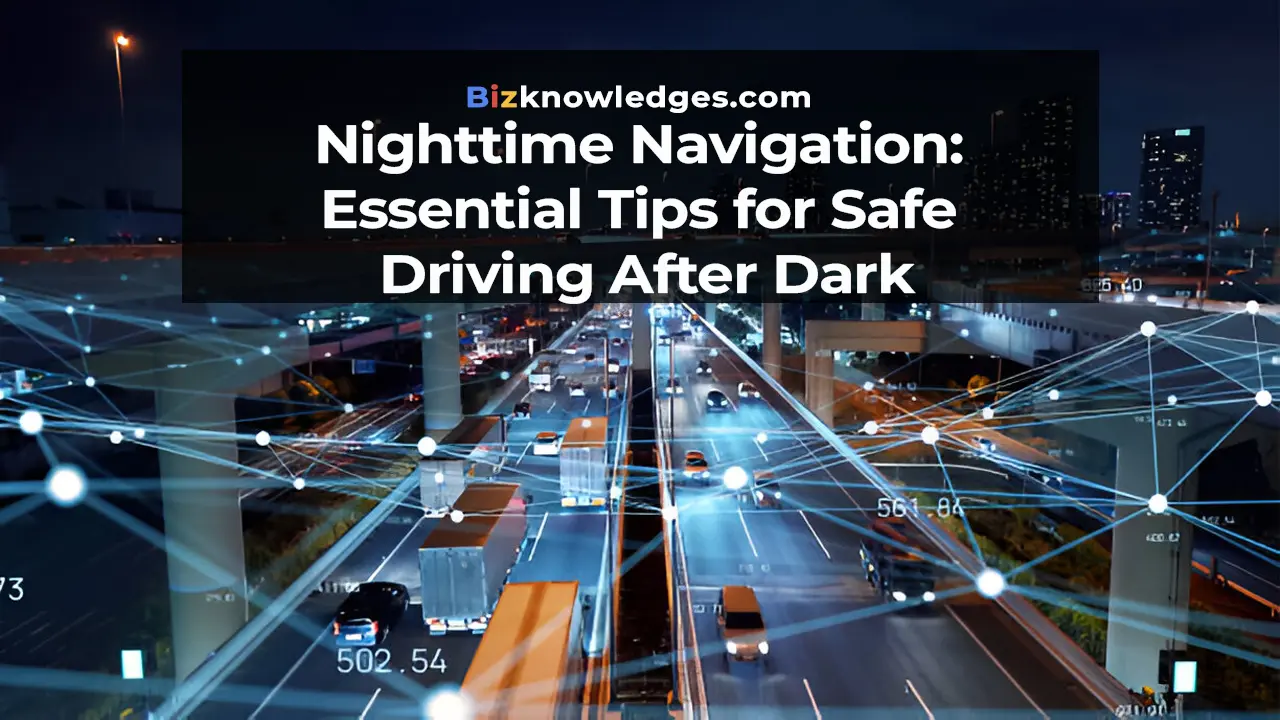Nighttime Navigation: Essential Tips for Safe Driving After Dark

Driving at night presents a unique set of challenges that can test even the most seasoned drivers. Reduced visibility, fatigue, and the potential for encountering impaired or distracted drivers all contribute to the risks associated with nighttime navigation. To help you stay safe on the road after dark, here are essential tips for driving at night.
1. Adjust Your Vehicle’s Lighting
Effective lighting is essential for safe nighttime driving. Make sure all your vehicle’s lights—headlights, taillights, and turn signals—are functioning properly. Regularly clean the lenses to enhance brightness and visibility. If your headlights seem dim, think about upgrading to LED lighting for improved illumination.
Use your high beams when conditions allow, but be sure to switch to low beams when you’re nearing oncoming traffic or closely following another vehicle. This not only enhances your safety but also helps avoid blinding other drivers.
2. Reduce Speed and Increase Following Distance
Speeding at night can be particularly hazardous due to limited visibility and the increased likelihood of encountering unexpected obstacles, such as pedestrians, animals, or road hazards. Reducing your speed gives you more time to react and improves your ability to see what’s ahead. In addition, increasing your following distance allows for better reaction time in case the vehicle in front of you suddenly brakes or encounters a problem.
3. Stay Alert and Avoid Distractions
Fatigue can significantly impair your driving ability. If you feel drowsy, it’s better to take a break or switch drivers rather than risk a dangerous situation. Nighttime driving can be monotonous, leading to lapses in attention. Stay engaged by using techniques to keep your mind alert, such as listening to music or podcasts. However, avoid anything that could distract you from the road, such as texting or fiddling with navigation systems while driving.
4. Use Defensive Driving Techniques
Nighttime driving often requires a heightened awareness of your surroundings. Be proactive by anticipating potential hazards, such as pedestrians crossing the street or cyclists sharing the road. Keep an eye out for signs of impaired driving, such as swerving, erratic speed changes, or failure to use turn signals. If you notice a driver behaving suspiciously, maintain a safe distance and, if necessary, report the vehicle to local authorities.

5. Be Aware of Weather Conditions
Weather can significantly affect driving conditions, especially at night. Rain, fog, and snow can reduce visibility and create slippery road surfaces. If you encounter adverse weather, adjust your speed accordingly and increase your following distance. Use your vehicle’s fog lights in foggy conditions, and avoid using high beams, as they can reflect off the fog and reduce visibility even further.
6. Watch for Wildlife
Many animals are more active at night, particularly in rural areas. Always be vigilant for wildlife crossing the road, especially in areas where “deer crossing” signs are posted. If you see an animal on or near the road, slow down and be prepared to stop. If a collision is unavoidable, it’s safer to steer straight rather than swerving, which could lead to losing control of the vehicle.
7. Familiarize Yourself with Your Route
Before heading out, familiarize yourself with the route you’ll be taking. If possible, drive it during daylight hours beforehand to identify potential hazards. If you’re using a GPS, input your destination before you start driving to minimize distractions. Keep a paper map as a backup in case of technology failures, ensuring you can navigate even if your devices let you down.
8. Take Care of Yourself
Your physical state can greatly impact your driving performance. Make sure you are well-rested before embarking on a nighttime drive. Avoid driving after consuming alcohol or medications that can impair your judgment or reflexes. Staying hydrated and eating light meals can also help keep your energy levels steady.
9. Practice Safe Parking Habits
When you reach your destination, park in well-lit areas to ensure your safety as you exit your vehicle. Be aware of your surroundings and avoid distractions, such as checking your phone, as you walk to your destination. If you’re in an unfamiliar area, consider staying in your vehicle until you feel it’s safe to exit.
Conclusion
Driving at night can be daunting, but with the right preparation and mindset, it can also be safe and enjoyable. By following these essential tips for nighttime navigation, you can enhance your driving skills and reduce the risks associated with nighttime driving. Remember, safety should always be your top priority, so stay alert, be cautious, and enjoy the journey, no matter the hour.
